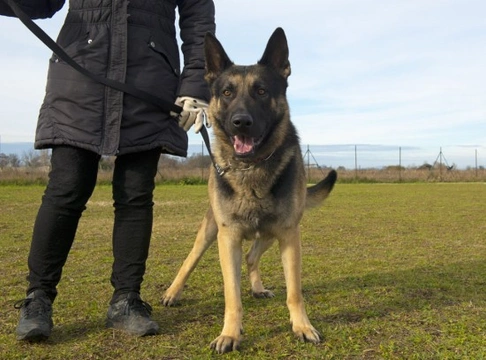
Have you heard of The Yellow Dog Project?
Have you heard of the Yellow Dog Project? If you are a dog owner or spend any time around dogs, you should have done! The Yellow Dog Project is currently active in 47 countries across the world, and is a simple scheme aimed at raising awareness of being sensible around other dogs and respecting the fact that some dogs require a little more personal space than others. If a dog falls into this category, the Yellow Dog Project suggests that they wear a small but bright yellow ribbon on their collars to let other pet lovers know this, and to give that dog a little bit of extra distance.Have you seen a dog with a yellow ribbon on its collar, or have you ever wished that there was a simple and readily understood way to communicate instantly to dog walkers and other people that your dog needs a little extra room? Read on to learn more!
What does the Yellow Dog Project hope to achieve?
The ultimate aim of the Yellow Dog Project is really simple: to promote the use of a universally understood and easy to spot symbol that can be worn by dogs who need a little more distance when out walking than others. And, of course, to raise awareness of the project so that other dog lovers, owners and the general public will recognise the symbol and understand to keep a little distance.Every sensible dog owner or anyone who walks of takes their children to areas where there might be dogs knows that is it both impolite and possibly dangerous to touch a strange dog or walk into their personal space without first checking with their owner, but for some dogs, this is not enough. Many dogs get frightened by strange people or dogs, or may have a medical condition that means you may inadvertently hurt them by handling them, or may be of an uncertain temperament. Affixing a yellow ribbon to their collars is one way in which their owners can let others to know not to approach their dog without permission, and to give them a little more room when passing them than might otherwise be necessary. Don’t forget your own dog either; it is never wise to let your dog approach other dogs, particularly while they are on the lead, without checking with their owner first.
What are the reasons why a dog might need a little extra personal space?
Any owner who wishes their dog to be given a little more space than normal when passing and asks that other people and their dogs don’t approach without permission is encouraged to affix a yellow ribbon to their dog’s collar, and if possible, let people who are not familiar with the scheme know what it is all about. The Yellow Dog Project suggests a wide range of reasons behind why a dog might be wearing a yellow ribbon, and it is of course useful to know that dogs wearing a yellow ribbon may need more room for a whole variety of reasons, that may not be related to their temperament or approachability itself. Here are some of the reasons behind why a dog might be partaking in the yellow Dog Project:
Dog in training
If a dog or puppy is in the process of being trained, outside interference and distractions can make this much more difficult! Much as is the case with assistance dogs for blind and deaf people, it is best to never interrupt a dog training session of any kind without a good reason! You will probably realise in short order if a dog is working on their training skills; try not to distract them!
Health problems
A dog that is recovering from an illness, injury or other health condition may be more fragile than usual, and might be more prone to injury or harm from another dog or even from normal contact with a person. Even if you cannot see any obvious sign of injury or illness, please keep back and keep your dog away from a dog that is wearing a yellow ribbon, just in case.
Fear of other dogs or people
Dogs that are extremely shy, anxious or nervous can find an approach by another dog or person very scary, and at best will become distressed by this and at worst, may even snap defensively. As is always both polite and sensible, don’t approach any dog without permission from their owner, and give all dogs plenty of space unless the owner indicates that it is ok to approach.
Undergoing assessment or rehabilitation
Finally, consider dogs with behavioural or temperament issues that require a significant amount of time to be spent on their assessment and training before they are able to be taken out off the lead or trusted to play nicely with other dogs or people. This is often the case with dogs that are being cared for by rehoming centres or dogs that have been re-homed after an uncertain past. Give them the time and space that they need to learn about the right ways to behave, and let them have some room, both for your own safety and for their benefit in the long term.
How to find out more
If you want to find out more about the Yellow Dog Project and how you can help to promote it, visit The Yellow Dog Project website.



